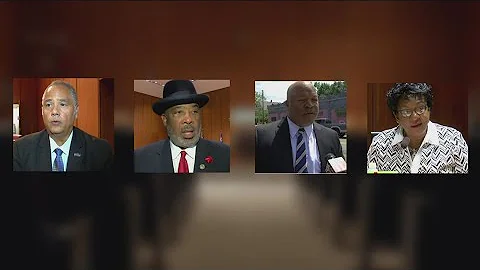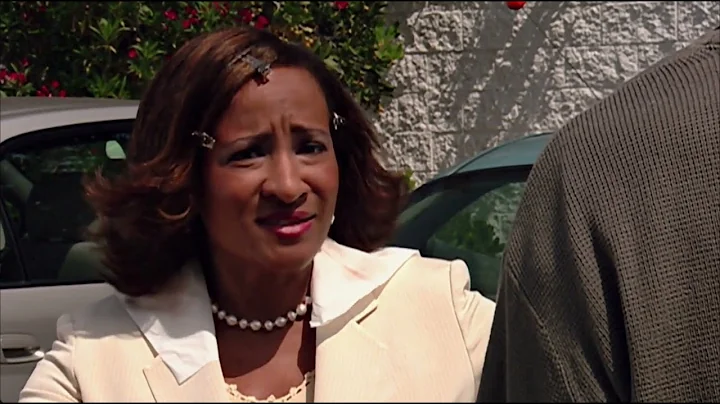Larry M Sykes
age ~81
from Raleigh, NC
- Also known as:
-
- Lawrence M Sykes
- Laurence M Sykes
- Larry M Skyes
- Sykes Sykes
- Reta Sykes
Larry Sykes Phones & Addresses
- Raleigh, NC
- 2500 Worchester Rd, Midlothian, VA 23113 • 8043796558
- Morrisville, NC
- Newport News, VA
- Savannah, GA
- Richmond, VA
Name / Title
Company / Classification
Phones & Addresses
Contact
Sykes Electrical, Inc.
Electricians
Electricians
1107 Secotan Pl, Fuquay Varina, NC 27526
9199246352
9199246352
Contact
Sykes Electrical, Inc
Electrical Contractor
Electrical Contractor
1107 Secotan Pl, Fuquay Varina, NC 27526
9199246352
9199246352
NORTHERN OHIO MEN AGAINST PROSTATE CANCER
Cardiology
Doctor`s Urgent Care Centre, Inc
Medical Clinic · Medical Doctor's Office
Medical Clinic · Medical Doctor's Office
801 Hwy 70 W, Garner, NC 27529
PO Box 41008, Fayetteville, NC 28309
217 Glensford Dr, Fayetteville, NC 28314
9197795010, 9108685959, 9104834647
PO Box 41008, Fayetteville, NC 28309
217 Glensford Dr, Fayetteville, NC 28314
9197795010, 9108685959, 9104834647
Us Patents
-
Expansion Of Tobacco
view source -
US Patent:43668259, Jan 4, 1983
-
Filed:Nov 21, 1979
-
Appl. No.:6/096409
-
Inventors:Francis V. Utsch - Midlothian VA
Henry B. Merritt - Richmond VA
Larry M. Sykes - Richmond VA -
Assignee:Philip Morris Incorporated - New York NY
-
International Classification:A24B 318
-
US Classification:131296
-
Abstract:Impregnated tobacco is expanded in an expansion operation involving the entrainment of the impregnated tobacco in a heated gas stream under high temperature-short entrainment time conditions resulting in a product of improved quality and enhanced expansion.
-
Process For Improving Filling Power Of Expanded Tobacco
view source -
US Patent:43889328, Jun 21, 1983
-
Filed:Dec 31, 1980
-
Appl. No.:6/221910
-
Inventors:Henry B. Merritt - Richmond VA
Larry M. Sykes - Midlothian VA -
Assignee:Philip Morris, Incorporated - New York NY
-
International Classification:A24B 318
-
US Classification:131291
-
Abstract:Tobacco which has been increased in filling power by a conventional tobacco expansion process can be further increased in filling power by a post expansion heat treatment. The post expansion heat treatment comprises contacting the expanded tobacco produced by a conventional expansion process with a gaseous medium, such as air and/or steam, at a temperature of from about 200. degree. F. to about 450. degree. F. The post expansion heat treatment is preferably conducted at a lower temperature than the temperature of the heating step of the expansion process, and thus can be more easily controlled, while providing an additional increase in filling power. The product of the post expansion heat treatment process of this invention has been found to be as acceptable in subjective smoking characteristics as the expanded tobacco which is treated by the process.
-
Process For Expanding Tobacco
view source -
US Patent:RE320145, Oct 29, 1985
-
Filed:Jun 28, 1984
-
Appl. No.:6/626190
-
Inventors:Larry M. Sykes - Midlothian VA
Ray G. Snow - Richmond VA
Roger Z. de la Burde - Powhatan VA
Patrick E. Aument - Richmond VA -
Assignee:Philip Morris, Inc. - New York NY
-
International Classification:A24B 318
-
US Classification:131291
-
Abstract:This invention relates broadly to an improved process for expanding tobacco and involves certain modifications of the basic process for expanding tobacco comprising the steps of (1) contacting the tobacco with liquid carbon dioxide to impregnate the tobacco with the liquid carbon dioxide, (2) subjecting the liquid carbon dioxide-impregnated tobacco to conditions such that the liquid carbon dioxide is converted to solid carbon dioxide and (3) thereafter subjecting the solid carbon dioxide-containing tobacco to conditions whereby the solid carbon dioxide is vaporized to cause expansion of the tobacco. The present invention pertains, in one embodiment, to an improvement in the basic process which involves controlling the moisture content of the tobacco which is employed in the first step of the basic process. A second embodiment of the present invention involves draining off excess liquid carbon dioxide, under controlled conditions, after the first step of the basic process and prior to the second step of the basic process. The present invention pertains, in a third embodiment, to an improvement which involves controlling the output moisture of the product which is recovered from the third step of the basic process.
-
Process For Expanding Tobacco
view source -
US Patent:43368140, Jun 29, 1982
-
Filed:Sep 5, 1979
-
Appl. No.:6/072647
-
Inventors:Larry M. Sykes - Richmond VA
Ray G. Snow - Richmond VA
Roger Z. de la Burde - Powhatan VA
Patrick E. Aument - Richmond VA -
Assignee:Philip Morris Incorporated - New York NY
-
International Classification:A24B 318
-
US Classification:131291
-
Abstract:This invention relates broadly to an improved process for expanding tobacco and involves certain modifications of the basic process for expanding tobacco comprising the steps of (1) contacting the tobacco with liquid carbon dioxide to impregnate the tobacco with the liquid carbon dioxide, (2) subjecting the liquid carbon dioxide-impregnated tobacco to conditions such that the liquid carbon dioxide is converted to solid carbon dioxide and (3) thereafter subjecting the solid carbon dioxide-containing tobacco to conditions whereby the solid carbon dioxide is vaporized to cause expansion of the tobacco. The present invention pertains, in one embodiment, to an improvement in the basic process which involves controlling the moisture content of the tobacco which is employed in the first step of the basic process. A second embodiment of the present invention involves draining off excess liquid carbon dioxide, under controlled conditions, after the first step of the basic process and prior to the second step of the basic process. The present invention pertains, in a third embodiment, to an improvement which involves controlling the output moisture of the product which is recovered from the third step of the basic process.
Medicine Doctors

Larry J. Sykes
view sourceSpecialties:
Family Medicine
Work:
South Court Medical Care
217 E Elm St, Graham, NC 27253
3362289671 (phone), 3362289674 (fax)
217 E Elm St, Graham, NC 27253
3362289671 (phone), 3362289674 (fax)
Languages:
English
Spanish
Spanish
Description:
Mr. Sykes works in Graham, NC and specializes in Family Medicine.
Classmates

Larry Sykes Sr (Sykes)
view sourceSchools:
Palo Duro High School Amarillo TX 1972-1976
Community:
Ronnie Mitchell, Steve Mcpherson, Susan Stover, Eugene Booth, Deborah Rogers, Kathy Walker, Michelle Loe, Beverly Trotter, Lynn Morris
Biography:
am retired and fish every day

Larry Sykes
view sourceSchools:
Princess Anne High School Virginia Beach VA 1975-1979
Community:
Kenneth Lynch

Larry Sykes
view sourceSchools:
George High School North Carrollton MS 1969-1973
Community:
Shirley Woods, Martin Gonzalez

Larry Sykes, Sumner High ...
view source
Larry Sykes | St. Francis...
view source
George High School, North...
view sourceGraduates:
Bernard Jones (1988-1992),
Clevira Williams (1989-1993),
Larry Sykes (1969-1973),
Justin Sanders (1991-1995)
Clevira Williams (1989-1993),
Larry Sykes (1969-1973),
Justin Sanders (1991-1995)

Sumner High School, St. l...
view sourceGraduates:
Larry Sykes (1977-1981),
Eric Bell (1989-1993),
Arlene Robinson (1962-1966),
Gussie Washington (1985-1989),
Donnie Moore (1969-1973)
Eric Bell (1989-1993),
Arlene Robinson (1962-1966),
Gussie Washington (1985-1989),
Donnie Moore (1969-1973)

St. Francis De Sales High...
view sourceGraduates:
Larry Sykes (1987-1991),
michael stroud (1981-1985),
John Mussery (1985-1989),
Jim Szymanski (1981-1985),
Howard Bierley (1962-1966)
michael stroud (1981-1985),
John Mussery (1985-1989),
Jim Szymanski (1981-1985),
Howard Bierley (1962-1966)
Googleplus

Larry Sykes

Larry Sykes
Tagline:
Www.hulkshare.com/boysykes

Larry Sykes

Larry Sykes

Larry Sykes

Larry Sykes

Larry Sykes

Larry Sykes
Work:
Retired
Myspace
Youtube

Larry Sykes
view source
Larry Sykes
view source
Larry Sykes
view source
Larry Postman Sykes
view source
Larry Sykes
view source
Larry Sykes
view source
Larry Sykes
view source
Larry Sykes
view sourceGet Report for Larry M Sykes from Raleigh, NC, age ~81










